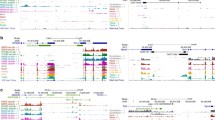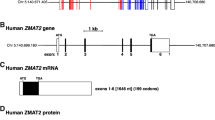Abstract
Small PRoline Rich (SPRR) proteins are primary constituents of the cornified cell envelope, necessary to create a permeability barrier across the body's surface. The family of murine Sprr genes has diversified, enabling the body to construct slightly different types of barriers as needed for backskin, mouth, tongue, etc. The Sprr genes have remained tandemly arrayed within 220 kb on mouse Chromosome (Chr) 3. On the basis of sequence similarity, we identified a novel member of the family, the murine ortholog of SPRR4. We present a sequence-verified physical map of the region and identify the complete coding sequence of the Sprr2 genes. Highly specific RNase protection assays based on the 3′ untranslated sequences were used to query the expression of these genes in a model of barrier deficiency, mice with a targeted ablation of the transcription factor Kruppel-like factor 4 (Klf4−/−). Twelve of the 15 members of the Sprr family are upregulated in the Klf4−/− mice. The sequences upstream of the start of transcription of the Sprr2 genes contain common regulatory elements conserved with the human SPRR2 genes. The clustering of the genes and their misregulation suggest that these genes may be held together in a tandem array to allow coordinate regulation.
Similar content being viewed by others
Author information
Authors and Affiliations
Rights and permissions
About this article
Cite this article
Patel, S., Kartasova, T. & Segre, J. Mouse Sprr locus: a tandem array of coordinately regulated genes . Mamm Genome 14, 140–148 (2003). https://doi.org/10.1007/s00335-002-2205-4
Received:
Accepted:
Issue Date:
DOI: https://doi.org/10.1007/s00335-002-2205-4




